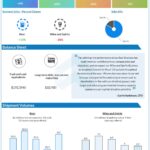Now, it has to continue to hold above 19,300 zones to extend the move towards 19,450 and 19500 zones, while on the downside, support is intact at 19,250 and 19,100 zones, said Chandan Taparia of Motilal Oswal.
India VIX was up by 1.56% from 11.70 to 11.88 levels. Volatility was on the rise and made the index consolidate in a range with slight profit booking.
Options data suggests a broader trading range between 19100 to 19600 zones while an immediate trading range between 19250 to 19500 zones. The hourly Bollinger bands are contracting, indicating rangebound price action.
What should traders do? Here’s what analysts said:
Nagaraj Shetti, Technical Research Analyst, HDFC Securities
The overall uptrend status of the Nifty remains intact. Though the market placed at new highs, the selling pressure has not been emerging from near the hurdle. If such a pattern continues for the next 1-2 sessions without showing any further damages, then that could eventually result in a sharp upside bounce in the market. Immediate support is at 19,300 levels.
Shrikant Chouhan, Head of Research (Retail), Kotak Securities
Technically, as long as the index is trading between 19320 -19435, the narrow-range activity is likely to continue. For bulls, 19435 would be the immediate breakout level. Above which, the market could rally till 19500-19525. However, below 19320, the selling pressure is likely to accelerate and could slip till 19250-19200. Contra traders can take a long bet near 19,200 with a strict 35 points stop loss.Jatin Gedia, Technical Research Analyst, Sharekhan
Over the next few trading sessions, we expect the Nifty to consolidate in the range of 19500 – 19300, and a dip towards the 19300 should be used as a buying opportunity. Overall, the uptrend is intact, and we expect levels of 19500. In terms of levels, 19300– 19270 shall act as a crucial support zone, while 19450 – 19500 shall act as a crucial resistance zone.
(Disclaimer: Recommendations, suggestions, views and opinions given by the experts are their own. These do not represent the views of The Economic Times)







